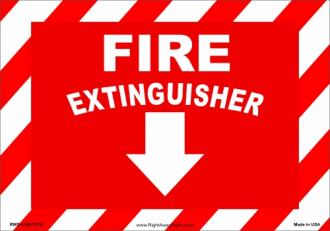News Taffy
| Post Your News Send Us An Event Start A Gallery |  |
| Most Recent | Most Popular | Top Contributors | Galleries | Events |
 | Contributor: admin subscribe to my stories |
 The Cardiologist's Wife - Fire Safety Tips A friend had a scare over the weekend with a fire which got me to thinking about our own safety in the event of a fire. Don’t worry, my friend and her family are okay, with minimal damage thanks to quick action and a fire extinguisher. But what about your own fire safety? Do you have a plan of action in the event of a fire and does every member of your family know it? Do you have at least one fire extinguisher for every floor? Here are a few safety tips to get you started in evaluating your fire safety preparedness. Having an easily accessible fire extinguisher could save your life or put out a small fire before it gets out of hand. Fire extinguishers are classified by the types of fires they can be used on: A is for ordinary combustibles like trash, wood, paper or cloth; B is for gas, paint and other flammable liquids; C is live electricity; D is combustible metals while K is cooking oils. Some extinguishers work for multiple types of fire and are labeled as such. There may also be a number before these letters indicating the extinguisher’s effectiveness in fighting each type of fire; the higher the number, the more effective it is. Different brands are labeled differently so read before purchasing so you know exactly what you are getting. The next thing to consider when purchasing a fire extinguisher is size. A small 2 lb. extinguisher is good for your car, a 5 lb. extinguisher is easier to use inside the house while a 10 lb. is better for larger fires like an outdoor grill or grass fire. Don’t get an extinguisher that is too heavy for you to actually use. Another distinguishing feature is that some extinguishers have rechargeable metal valves while disposable extinguishers have plastic valves. The rechargeable ones cost more initially and must be refilled periodically. Fire extinguishers can lose pressure over time, rendering them useless so it pays to check them at least once a year. Remember to check your smoke alarm batteries and your fire extinguishers at the start of the new year. A fire extinguisher isn’t going to help if you don’t know how to use it. Go over the instructions with everyone in the household who is old enough to use it. The acronym PASS is easy to remember. Pull the extinguisher’s safety pin. Manufacturers say extinguishers should last between 5 to 15 years but check the expiration date or gauge regularly. If the needle is in the green area, it’s functional, otherwise replace it. Replace or fix your extinguisher if the hose is cracked or torn, the locking pin on the handle is broken or unsealed, the handle is loose, there is corrosion or it looks in general disrepair. Keep a fire extinguisher on your boat, trailer and workshop. A little effort on your part could save lives and property so don’t put this chore off. [+] add comment |














